Contents
- What is Obesity in German Shepherds?
- How Can You Tell if Your German Shepherd is Obese?
- Health Risks Associated With Obesity in Dogs
- German Shepherd Ideal Weight
- What is the Average Size of a German Shepherd?
- How do I Help My German Shepherd Lose Weight?
- How Should a German Shepherd be Fed to Maintain a Healthy Weight?
- How Much Food Should a German Shepherd Eat?
- What if My Dog Doesn’t Look Fat?
- FAQs
- Obese German Shepherds Can Suffer From Severe Health Issues
Obesity is more common in dogs than you might think. There are a variety of reasons that dogs can become obese, and owners need to be cautious about their feeding regimen so that their dogs do not become overweight. A fat dog is not a healthy dog, and some breeds, like German Shepherds, can suffer other health issues as a result of becoming too fat.
If you are not sure if your dog is fat or obese, and you do not know much about how to resolve this health concern, you will need to keep reading. There are some common causes for obesity in dogs, and certain health conditions can also cause dogs to become overweight. Working with a vet is usually necessary to ensure that your dog gets back to a healthy weight in the safest way possible.
What is Obesity in German Shepherds?
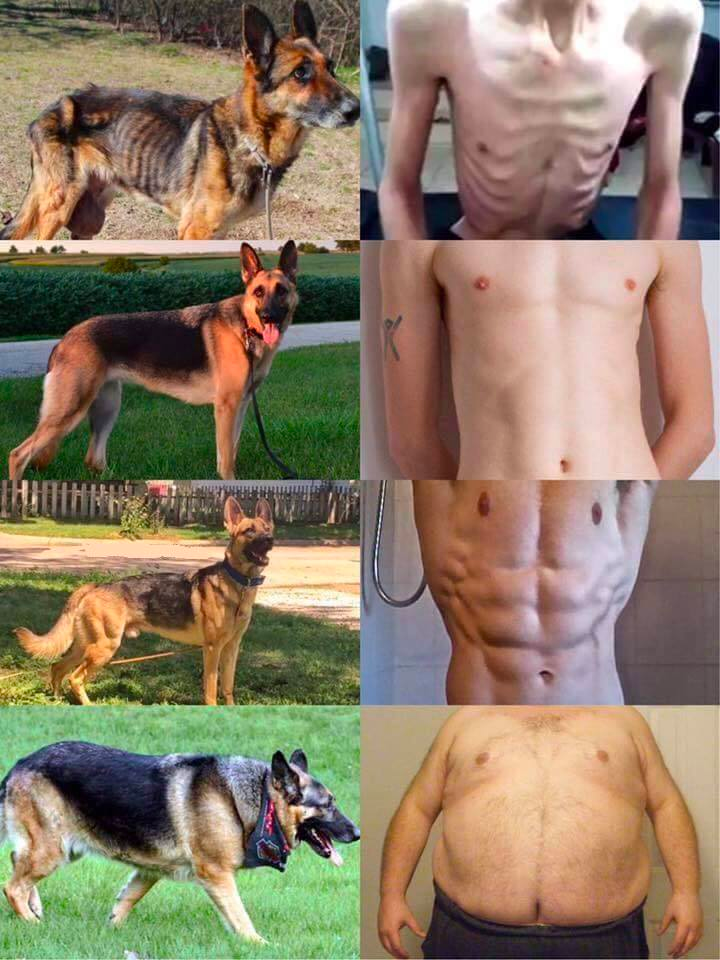
Obesity and being “fat” are actually different things. There is a weight scale or body condition guide that veterinarians use to determine the body condition of every dog that they see. The scale is also used to determine the actual weight of your dog to help compare their body condition to the expected guidelines for your dog’s age and sex.
Dogs are scored on a scale from severely underweight to obese. Some vets will actually also define obesity as severely overweight rather than using the term obese. Dogs that are fat are 10-20% above their ideal body weight for their height, breed, and sex. Dogs that are obese are 20% or heavier than they should be, considering all of these factors.
It can be easy to forget what your dog looked like when they were a healthy weight. To complicate matters, German Shepherds are very high-energy and might be motivated to continue to play and run around, even though they are far too overweight to do so safely. Obesity and being too fat can lead to all kinds of secondary health conditions that you will want to avoid.
Being able to recognize what an overweight or obese dog looks like is the first step in getting your dog the help that they need to get back to being the right weight.
How Can You Tell if Your German Shepherd is Obese?
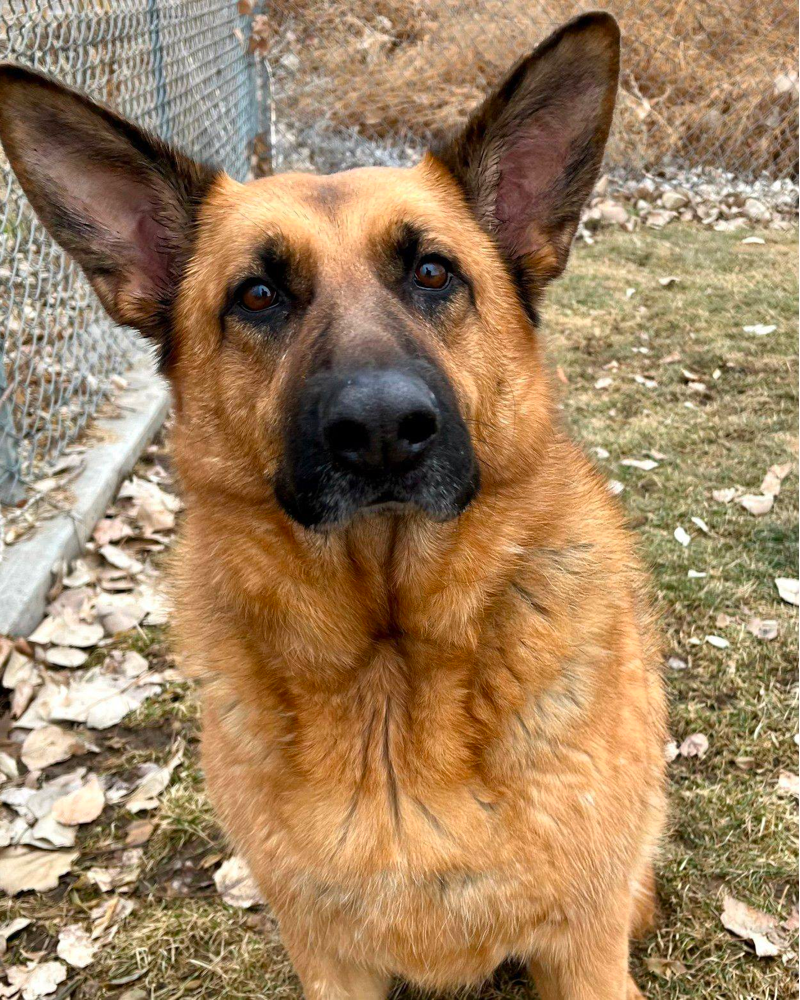
If you are not sure if your dog is obese, looking at a weight chart with pictures can help. These items are usually placed in each waiting room location and in exam rooms at the vet, but they are available online as well. The chart will indicate the various levels of body condition and show you a picture of the way that these dogs appear, both from the side and when looking down on them from above. This is a very effective way to communicate the weight of an animal for those who are not used to looking at their pets with this critical eye.
An obese dog will not have any “waist” to speak of and will look round both over their spine and in their belly. They might also appear to have very short legs or very thick necks. The appearance of your dog is not the only way to tell if they are obese, however. You can also look at their behavior if you are concerned that your dog’s weight has increased to a dangerous point.
First of all, you will want to place your hand palm down on their sides and run your palm along the side of the body. If you cannot feel any ribs at all, your dog is almost certainly obese. You can also gently press into your dog’s back with your fingertips. If you do not feel any bony structures under your fingers, your dog is likely to be fat or obese.
Health Risks Associated With Obesity in Dogs
Dogs that are obese can suffer from a variety of different health concerns. Many people believe that their dog’s obesity will just limit their ability to play and go for walks. There are a lot of other health risks that are associated with obesity in dogs that owners need to be aware of.
Obese dogs are at higher risk for getting diabetes, which can be tough to manage in some animals. Even if you get your dog’s weight down, you might still have to treat them for diabetes for the rest of their life. Another complication for obese German Shepherds is heart disease. German Shepherds are already at risk for heart problems, so adding obesity complications to the mix is not ideal.
Bladder stones are also associated with obesity in German Shepherds, and these often require surgery to remove. Dogs that are obese are also at a much higher risk of developing arthritis and degenerative joint issues. Being too heavy can also make a German Shepherd much more likely to suffer from hip and elbow dysplasia.
Obese German Shepherds are also much more likely to get cancer. This can be a big risk for this breed since they are already more likely to get certain cancers genetically.
All of these risks can affect obese dogs, no matter how old they are. The older the dog, the more likely it will be that being obese is impacting their health significantly, but even very young German Shepherds can get sick due to being obese.
German Shepherd Ideal Weight
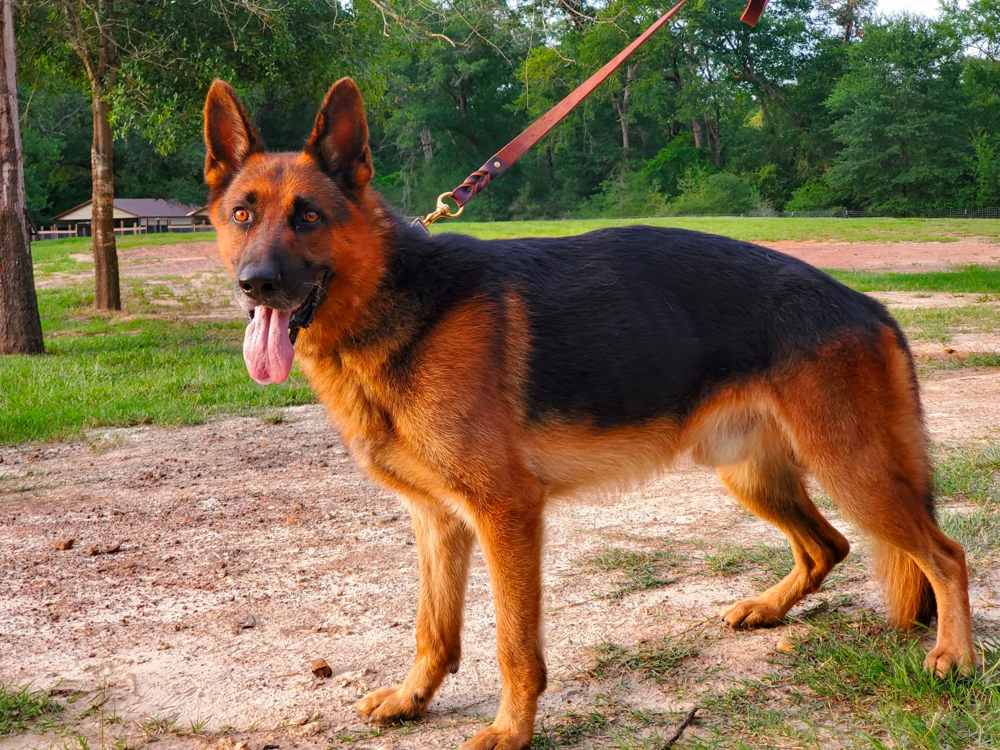
The ideal weight of your dog will change over time. Females can be about 5 lbs lighter on average than male dogs. Also, consider that if your dog is very tall, it might weigh slightly more than these ideal ranges. If your dog passes the tests related to identifying your dog’s excess weight, then it might just be big enough that it should weigh more than a dog that is significantly shorter.
| Age | Ideal Weight |
| 1 month | 5.5-9 lbs |
| 6 months | 49-57 bs |
| 1 year | 71-79 lbs |
| 2 years | 71-84 lbs |
| 3 years | 79-88 lbs |
| 5 years and older | 70-85 lbs |
What is the Average Size of a German Shepherd?
There is no hard and fast rule about the average size of these dogs, but your dog should be within some standard ranges for the breed. Male German Shepherds are typically about 24-26 inches tall, and females are typically about 22-24 inches tall.
The average male German Shepherd should weigh about 75-90 pounds, while a female German Shepherd will weigh about 55-70 pounds. This amount of weight can look very different on some dogs than others as well, which is part of why some owners struggle to be able to tell if their dog is getting fat.
It might help to look at images of dogs that are at a healthy weight so that you can get a better idea of what you are looking for when judging your pet’s weight visually. Remember that you should be able to feel their ribs just slightly and that they should have a waist. You should also be unable to find any large fat pads on your dog’s body, and their neck should not be thick.
These kinds of assessments get easier over time. The more you pay attention to your dog’s weight, the more you will learn to be in sync with their needs. Responding right away to increasing weight with an adjustment in food is always a good idea. If your dog looks just slightly fatter, you might just need to increase its activity level some. A balance of less food and more activity needs to be in place so that you don’t accidentally throw off your dog’s diet too much.
How do I Help My German Shepherd Lose Weight?
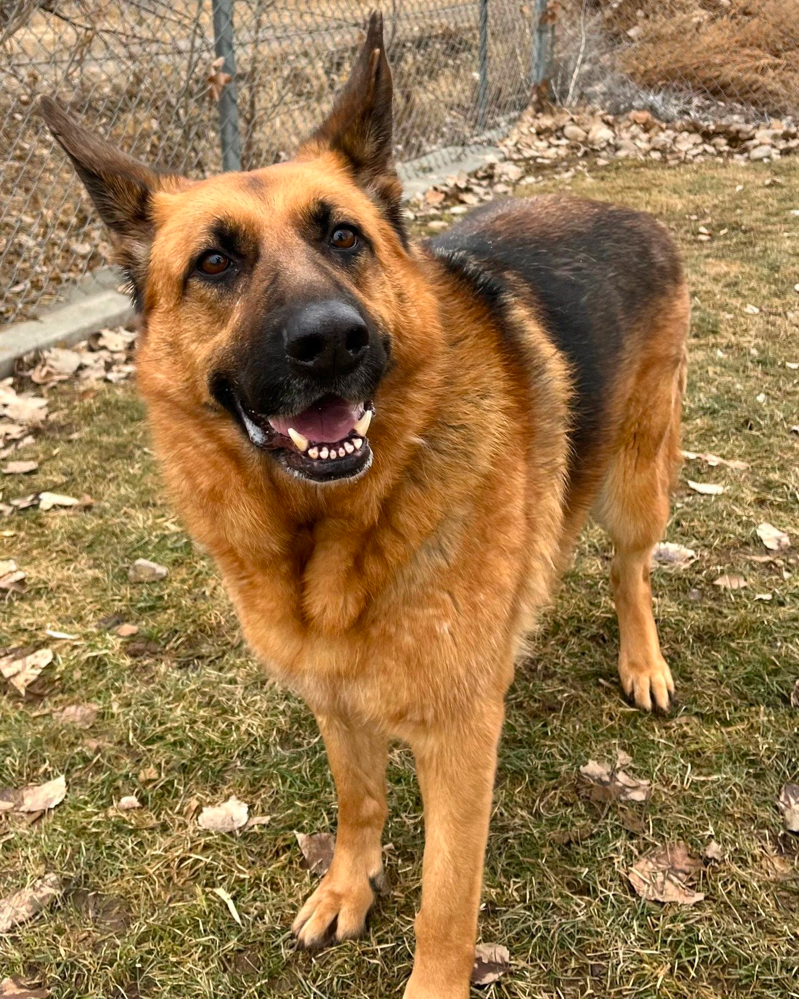
If your German Shepherd is obese, you will want to seek the support of a vet to help you to get them back to a healthy weight carefully. You don’t want to shock your dog’s system by cutting way back on food or making lots of changes to their overall diet. The best way to get started with tackling your dog’s obesity is to cut back their food by about a quarter and start asking them to exercise more. You will need to slowly cut back on food until you see a steady change in their body score. Ensure you do not cut back beyond the minimum feeding amount recommended for their size by the manufacturer.
Exercise can be really hard for obese dogs. They might get tired after just walking around the block. Break up your dog’s exercise routine into a few unique sessions throughout the day is a good idea in the beginning. Even if your dog is just walking around the house with you all day long, this is exercise, and it can be enough to help get your dog back into shape. Be aware of your dog’s drinking habits and ensure that they are getting enough water to avoid dehydration or heat exhaustion.
Your vet will probably also recommend that you put your dog on a weight-loss food. This will allow your dog to eat a normal volume of food so that they don’t think they are starving. These foods are made to offer reduced calories while still giving your dog all the nutrition that they need. Diet foods might have to be your dog’s food long-term if they are really old and have a hard time moving around, but younger dogs can probably switch from diet food to regular food once they have reached an optimal weight.
One of the best ways to ensure that your dog is actually losing weight is to weigh them regularly and track the weigh-ins. You will want to see some forward progress each week, but you should not be discouraged if your dog does not drop a lot of weight rapidly. This is actually not very good for your dog, and you will be more likely to protect their health by having them lose weight more slowly.
Make sure that you stop feeding treats and that you are not feeding human food to your dog. Sometimes just cutting these foods out of your dog’s diet is the answer. Younger dogs can often lose a lot of weight just by eating kibble only. It can be tempting to give your dog a treat whenever they seem hungry or whenever they do what you have asked for, but that is not a good plan for a dog that is fat.
How Should a German Shepherd be Fed to Maintain a Healthy Weight?
Keeping your obese German Shepherd at a healthy weight might seem really complicated, but it actually is usually quite easy. Just because your dog has lost weight does not mean that you can go back to feeding them like you were in the past when they were fat. Your dog should not be fed human food or lots of treats. You will need to be sure that you keep your dog on the recommended portion of food per meal as well.
Feed a high-quality kibble and make sure that your dog is active every day. If your dog is having a hard time moving around, you will need to be sure that you speak to your vet about things like arthritis that might be causing their reluctance to move around enough to maintain a healthy weight. It can be tempting to go back to feeding your dog snacks and treats, but this is often a slippery slope that leads right back to your dog becoming obese again.
Portion control can look different to each dog, and you will need to make sure that you get the guidance that you need to be sure that you are feeding your dog enough food for their height and their age. Some dogs will need to have their portion of food reduced as they get older and more sedentary. Dogs might also need their food to be adjusted if they are being very active. If your dog is losing a lot of weight, you can increase their portion to make sure that they don’t get too skinny.
How Much Food Should a German Shepherd Eat?
The kind of food that you feed has a lot to do with how much your dog needs to eat. If you are feeding raw food or you are feeding butcher cuts, your dog will need to eat a lot differently than a dog that is eating kibble. This is part of why these feeding plans are not always recommended for pets. Make sure that you have guidance to help you get started with this kind of feeding plan so that your dog is getting enough to eat and getting all the right nutrition.
When feeding kibble, on average, an adult German Shepherd will eat about 2.5-3 cups of kibble. The kind of kibble can impact how much your dog will need to eat, and you should read the side of the bag before you start feeding your dog. It can be wise to start toward the lower end of the suggested feeding range and see how your dog does. You can always add some more food to their diet slowly if you need to. It’s much harder to help your dog to lose weight than it is to increase their meal size a bit.
Any changes you make to your dog’s feeding plan should be done slowly. German Shepherds can bloat and suffer from other digestive upsets due to feeding plan changes. The more gradual you are with any changes that you make, the better. You will also need to be cautious about changes to other kinds of food. Be sure that you mix the two foods together gradually and let your dog get used to eating the new food over time.
Your older dog will probably only need about 2 cups of food a day, but if they are on a diet food or a kidney diet, the amount that they should eat can be quite different. This is always something that you should talk to your vet about to make sure that you are not feeding the wrong amount of food for your dog’s needs. Wet foods and dry foods often feed quite differently as well, and owners might feed too much wet food because it seems like the cans are too small to adequately fill your dog up.
What if My Dog Doesn’t Look Fat?
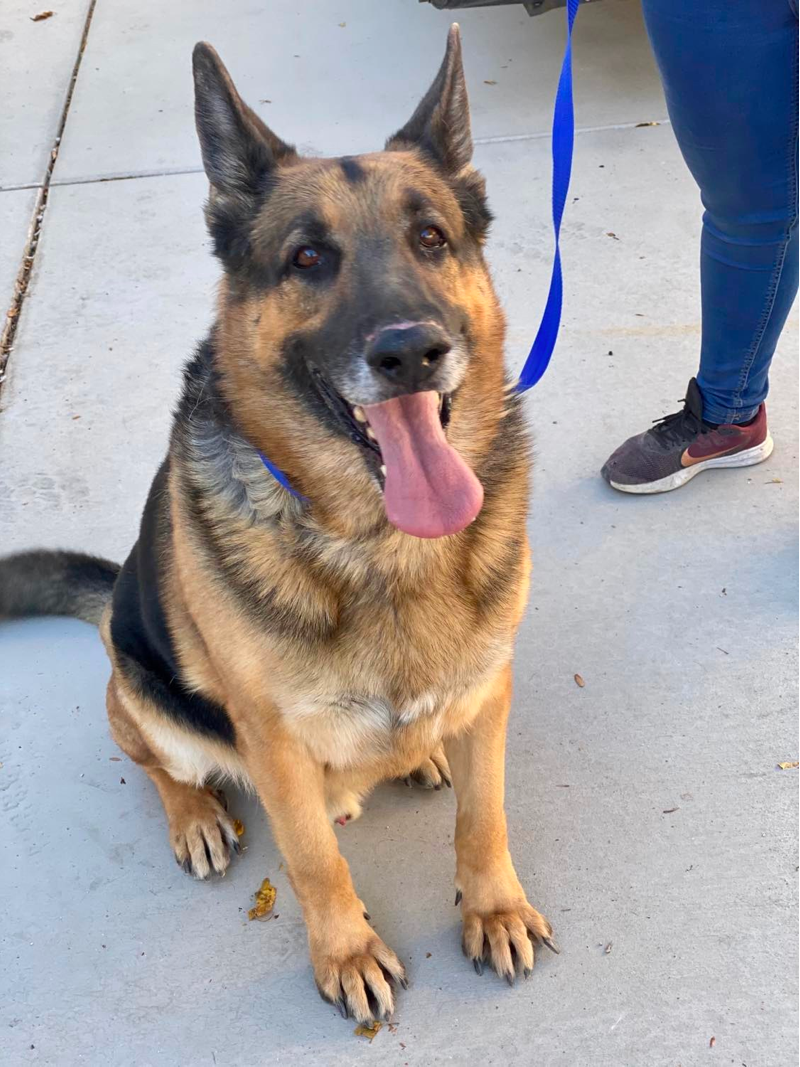
Sometimes dogs can be too fat without appearing to be overweight. This is often something that happens just as your dog starts to cross from a healthy weight to an obese weight. Long-haired dogs can easily hide extra weight due to their fluffy coat as well. Many people miss that long-haired dogs have gained a lot of weight, all because of the nature of their coats.
If your dog has a long coat, you will want to be sure that you get them wet and then check their body score condition and see if you can feel their ribs. Long-haired coats will immediately stop hiding your dog’s true weight when they are wet.
For dogs with smooth coats, it can be simple to just run your hand down your dog’s spine and see if your feel fat packs or extra padding under their skin. You can always check that you can feel their ribs a little when you are petting them as well. These little checks can help you to notice that your dog is gaining weight long before they have become too fat to be healthy. As you get more used to paying attention to your dog’s healthy weight, you will notice right away when their body starts to change appearance.
For females that have had puppies, always remember that they will need to slowly have their feeding plan adjusted back to their intake before they were raising puppies. Nursing and some other stresses related to having a litter can make your dog quite thin until the puppies are weaned. Do not continue to throw enough food at your female dog to make her fat once she no longer has puppies at her side.
Older dogs might also need to have their feeding plan adjusted over time. As your dog starts to be less active, you will need to pay attention to their body condition a bit more closely. Older dogs can start to carry weight in strange places on their body as well, so you might need to talk to your vet to confirm whether or not they are too fat. Fat distribution can change how your older dog looks, but it might not mean that they are getting too fat.
READ MORE: How To Keep Your German Shepherd Thin, Fit and Healthy
FAQs
What Happens if Your German Shepherd is too fat?
Obese dogs can suffer from hip, knee, elbow, and spine problems. They can also suffer from things like diabetes and organ failure. Making sure that your dog is a healthy weight is key to their long-term well-being.
Are 100 Pounds Heavy for a German Shepherd?
Some large male German Shepherds can weigh up to 100 pounds. However, most adult German Shepherds will weigh about 80-90 pounds.
How Long Does it Take for a German Shepherd to Lose Weight?
This is not an overnight process. Your dog will need to lose weight slowly over 6-8 months. Your vet can help you figure out how much weight your dog should lose per month.
Obese German Shepherds Can Suffer From Severe Health Issues
If your dog is overweight or obese, they will be likely to suffer from lots of different health issues. Dogs that are too fat can be prone to cancer, joint and spine issues, and organ health problems. Making sure that your dog is eating the right amount of food and that they are not getting human food can go a long way toward ensuring that your German Shepherd stays healthy throughout their life.
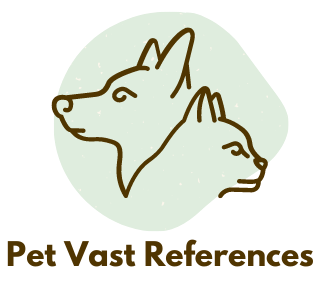
 Liver German Shepherd: Gorgeous and Companionable Dog
Liver German Shepherd: Gorgeous and Companionable Dog